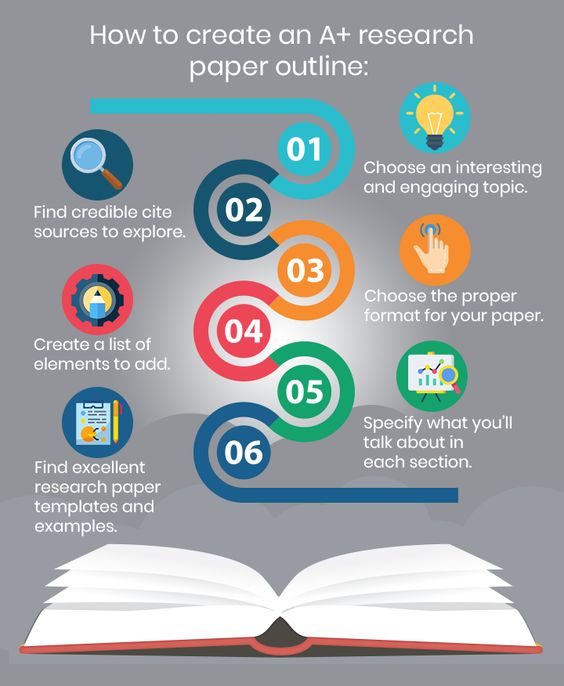
Table of Contents
What is a Research Paper?
Research papers are common assignments for students in undergraduate, Degree and even Masters nursing courses. While there are various approaches to writing the assignments, understanding the right research paper structure is essential for success. The structure serves as the blueprint for the paper, guiding you on how to organize your ideas and work to meet the threshold of academic writing.
The main goal of writing research papers in school is to test the students’ research skills and knowledge of particular areas or subjects in their various courses. Nursing research papers will gauge your ability to apply the knowledge that you have acquired in class, collect, analyse and present data logically.
The following guide will concisely discuss the steps on how to write a nursing research paper. It will cover areas such as research paper structure, how to begin a research paper, writing a research paper outline and how to conclude a research paper.
Nursing Research Paper Structure
Unlike essay writing that can take several informal approaches, writing research papers takes a formal approach. There is a specific research paper structure that students must follow when writing research papers. A typical research paper comprises multiple sections, providing an in-depth analysis, evaluation and interpretation of a given topic, with empirical evidence.
1. The Title
The title is the first section of a research paper that invites the reader in and tells them what your paper is about. It is the first point of contact for your paper, which can either persuade or turn away your readers. Therefore, the title should be clear, precise and exciting to whet the readers’ appetite. The title should bear the names and affiliations of the author or researcher.
2. Abstract
Although the abstract page is sometimes considered as optional, it is an important component of the research paper structure. It summarises the entire study, in short paragraphs and simple language the readers can quickly read through. Some journals divide the abstract into different sections to guide readers. Nonetheless, you should remember to keep the sentences short and focused to the make the abstract impactful. It is also advisable to avoid citations and acronyms on this section.
3. Introduction
The introduction usually covers a lot of ground to guide readers from a general subject area to a narrower issue that the paper explores. It explains the scope, context and importance of the research. The goal of the introduction is to help your readers to understand the background of the topic and provide guidance for navigating the other sections of the paper. Here are the six essential components of a research paper introduction;
- Topic overview
- Prior research
- A rationale for the paper
- Description of the methodology used
- Thesis statement
- Outline
The introduction should pique the interest of the readers and prepare them for the in-depth study and analysis to come.
4. Methods
The methods or methodology is one of the most elaborate sections of a research paper structure. It describes and explains the methods of data collection and analysis applied in the study. It explains to the readers what you did in the research and how it happened, allowing them to evaluate the validity and reliability of your study.
The methodology section gives you the opportunity to share how the research was conducted and why you chose those methods. The following are the key elements that should be covered in the methods section.
- The type of research conducted
- The data collection and analysis methods
- Any tools or materials used in the study
- How the research mitigated biases
- Why those methods were chosen
You should keep in mind the academic writing style guidelines for your paper when crafting the methodology section.
5. Results
The results section reports the findings of your study. It gives the readers a clear idea of what your research established, keeping the data separate from the subjective analysis to come. Although the length of the results section depends on how much data collected and analysed, it should be concise and clear.
You should only include the results with a direct relevance to answering your research question. The reporting should be objective, only presenting brief observations in relation to your hypothesis, theme or questions. Avoid using speculative or interpretive words when writing the results section.
6. Discussion
Perhaps, this is the most elaborate section of a research paper structure. The discussion section should describe the results of your study and their implications. It should tell the readers into detail, what your findings mean. There are key elements that must be covered in the discussion section including;
- Explanation of results
- References to previous research
- Deduction
- Hypothesis
Make sure that you clearly explain the results of your study, noting any unusual findings and their implications. It is also advisable to compare your findings with the results of other studies. Show how the results can be applied in the real world before giving concluding remarks on the findings.
7. Conclusion and Recommendations
This section should briefly restate the study that you conducted, the aims and research question or hypothesis. It should highlight the most important results and, state any achievements and limitations of the study. Provide an assessment of how the study has met your goals including the things that you have learnt from the exercise. The recommendations part should suggest how your research opens new possibilities. It is also important to put your study in a wider context in the real world.
8. References
The references page is usually the last section of a research paper structure where you list the resources used to support your study. The references must correspond to the citations in the text. However, the referencing style for your paper will depend on the guidelines of the assignment.
Tips for Writing Research Papers for Nursing
The following is a step-by-step guide, specifically customized to help students in writing research papers. Although some steps may not apply in all your nursing assignments, the guidelines can keep you on track towards crafting outstanding research papers.
- Read and understand the assignment guidelines
- Choose an interesting topic
- Collect preliminary research
- Draft a thesis statement
- Determine supporting evidence
- Write a research paper outline
- Make your first draft
- Cite your sources correctly
- Edit and proofread your work before submission

Get Professional Research Paper Writing Help
PhDNursewriter has the best writers that you can always rely on for professional research paper writing help. We provide customized academic writing services for nursing essays, research papers and dissertations. Place an order to begin your academic journey with us!





